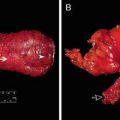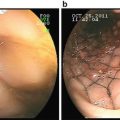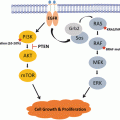© Springer International Publishing AG 2018
George J. Chang (ed.)Rectal Cancerhttps://doi.org/10.1007/978-3-319-16384-0_2020. Quality of Life After Multidisciplinary Management of Rectal Cancer
(1)
Department of Surgery, University of Iowa Healthcare, Iowa City, IA, USA
(2)
Department of Surgical Oncology, University of Texas MD Anderson Cancer Center, Houston, TX, USA
Introduction
The goals of rectal cancer treatment include optimal local control, maximal overall survival, as well as the best preservation of pre-therapy function and well-being of the patient. As illustrated in the remainder of this textbook, significant efforts have been devoted to developing surgical and multimodality regimens to achieve these goals. Stage-specific treatments include surgery alone (local excision or radical resection) for early-stage rectal cancer (American Joint Commission on Cancer [AJCC] stage I) and multimodality therapy with radical surgery, chemotherapy, and/or pelvic radiation for locally advanced (AJCC stages II and III) and metastatic (AJCC stage IV) rectal cancer. With this current multimodality strategy, the overall 5-year survival for locally advanced rectal cancer is 65–75%, with local recurrence rates in the range of 5–10% [1–6].
Patients and clinicians have long been aware of the profound impact of radical pelvic surgery , multimodality therapy, and their combination on patient-centered outcomes. These include short-term perioperative complications, as well as long-term morbidity, adverse functional consequences, and impaired overall health status and quality of life (QOL). Standard proctectomy for rectal cancer can involve sphincter preservation and maintenance of intestinal continuity or can result in sphincter loss and a permanent colostomy. Patients with intestinal continuity can have significant gastrointestinal dysfunction, with a collection of symptoms that has been termed the “low anterior resection syndrome ” (LARS) [7], while patients with a permanent colostomy can struggle with functional problems and body image issues. Temporary or permanent injury to the pelvic nerves during pelvic dissection and/or pelvic radiation can lead to sexual and urinary dysfunction. In addition to these functional issues, patients can suffer from constitutional symptoms including decreased energy, fatigue, and psychological distress. All of these adverse functional outcomes can significantly impact the patient’s physical and mental well-being and overall QOL. In the context of patient-centered research, QOL and other patient-reported outcomes (PRO) are being increasingly examined in clinical trials and comparative effectiveness studies of different treatment strategies. These data are now considered valuable and necessary in helping patients make informed treatment decisions while incorporating their own personal values and preferences into their treatment approach [8].
In this chapter, we will summarize available data regarding the impact of multimodality therapy on QOL, as well as discuss methodological challenges and future areas of research toward optimizing QOL after multimodality treatment.
Definitions: Quality of Life (QOL), Health-Related QOL, and Patient-Reported Outcomes (PROs)
In 1948, the World Health Organization defined health to be “a state of complete physical, mental and social well being, and not merely the absence of disease.” This definition “includes psychological, physical and social functioning and incorporates positive aspects of well being as well as negative aspects of disease and infirmity” [9]. QOL has also been defined as the “the subjective evaluation of life as a whole” or, in another form, as the “patients’ appraisal of and satisfaction with their current level of functioning compared to what they perceive to be possible or ideal” [10].
Despite the multitude of definitions , there is general consensus that QOL is a multi-domain construct reflecting the patient’s perspective on the effect of treatment on his or her own well-being. It encompasses several key dimensions including general health, physical symptoms, functionality, treatment-related toxicity, emotional well-being, cognitive issues, role functioning, social well-being, sexual function, as well as spiritual issues [9]. While QOL includes all aspects of well-being and can even include the impact of living standards, environmental factors, and other non-health-related factors, the term health-related QOL (HRQOL) is more focused and measures aspects of QOL that are specifically affected by healthcare interventions such as surgery and other treatment modalities [10]. More broadly, “patient-reported outcomes” (PROs) include standardized measurements of the patients’ subjective assessment of their health status, as well as perceptions about treatment and satisfaction with care received [11, 12]. The Food and Drug Administration (FDA) defines PROs as “any report of the status of a patients health that comes directly from the patient, without interpretation of the patients response by a clinician or anyone else” [13]. PROs can assess a number of domains including symptoms experience (e.g., pain, fatigue, and nausea), functional status (e.g., bowel, sexual or urinary function), well-being (e.g., physical, mental, social), QOL, and satisfaction with care or with treatment [13].
As the field of patient-centered outcomes has progressed during the past three decades, its related nomenclature has also evolved to become more representative of the constructs measured. For the purpose of this article, QOL, HRQOL, and PROs will be used interchangeably and synonymously. It is however important to keep in mind the distinctions between these terms as the field of patient-centered outcomes further advances in methodology and sophistication.
Why QOL Must Be a Key Endpoint Measured in the Treatment of Rectal Cancer
In defining the most relevant endpoints for phase III trials, the National Cancer Institutes (NCI) has stated that “of greatest medical importance, of course, are relative survival and quality of life” [14]. While disease control and survival outcomes have been the standard benchmarks for oncologic therapies, preserving the QOL of cancer patients, survivors, and their families has emerged as a well-defined strategic objective in recent years. Indeed, the optimal treatment of rectal cancer should allow patients to enjoy longer and better lives than they would without the treatment. Therefore, assessing statistically significant and clinically meaningful improvement in QOL represents an important measurement of therapeutic efficacy.
When applied to patients with locally advanced rectal cancer, investigations to identify the optimal multimodality treatment regimen should therefore assess not only traditional oncologic outcomes such as recurrence-free (local and distant) and overall survival but also include the perspective of patients who eventually survive the disease and live with its treatment sequelae [14]. Pelvic surgery, radiation, and systemic chemotherapy have proven efficacy in improving oncological outcomes. Yet they also result in substantial short-term morbidity as well as adverse long-term outcomes including constitutional, gastrointestinal, sexual, and urinary dysfunction. While omission or reduction in the nature or extent of any of these modalities is likely to have a positive impact on QOL and PROs, it could potentially compromise oncologic outcomes.
As a result, the definition of the “optimal” outcome for locally advanced rectal cancer is highly dependent on whether it is evaluated from the clinicians’ or patients’ perspective. Most clinicians tend to consider decreased local and distant disease recurrence along with greater overall survival as the ultimate benchmarks for optimal care. On the other hand, depending on their values and belief systems, patients may accept a decreased survival in return for a better QOL. Several qualitative studies have demonstrated that patients with rectal cancer highly value functional outcomes and may be willing to accept a higher risk of local recurrence to preserve good functional outcomes [15–17]. Similarly, sphincter preservation is considered a metric of quality care in rectal cancer patients, even though a substantial proportion of patients who undergo sphincter preservation will battle with adverse gastrointestinal function. In this context, some patients may not choose sphincter perseveration to avoid the impact of gastrointestinal dysfunction on QOL. Conversely, other patients may be so mentally averse to having a permanent colostomy that they would accept substantial gastrointestinal dysfunction and a perceived diminished QOL over having a colostomy. The patient’s perception of how treatment affects his or her well-being is influenced by internal standards, intrinsic values, expectations, as well as prior experiences. While this is a subjective concept, it can be objectively measured with psychometrically valid instruments.
The assessment of QOL including functional outcomes and PROs is therefore important in determining the efficacy of treatment strategies for rectal cancers. It is essential to know how each of these modalities impacts the patient’s functional outcomes and QOL. Therefore, the incremental benefit of different modalities and strategies on the oncologic endpoints can be put in context for the patient in order to determine the most suitable treatment strategy. As a result, in clinical studies and trials, PRO instruments should be used to measure the impact of an intervention on one or more aspects of a patients’ health status, ranging from the purely symptomatic, to more composite concepts (e.g., ability to carry out activities of daily life), and to extremely complex constructs such as QOL, which as described previously is a multidimensional concept with physical, psychological, and social components [18].
Mechanisms Through Which Multimodality Therapy Can Impact QOL
Patients undergoing treatment of locally advanced rectal cancer usually receive a combination of pelvic radiation, surgery, and systemic chemotherapy. All of these different modalities individually and in combination can have adverse effects on functional outcomes and in turn impact QOL and PROs of patients.
Surgery
Radical surgery for rectal cancer involves removal of a portion or the entire rectum in order to adequately remove the primary tumor and the surrounding lymph nodes. Depending on the relationship to the sphincter complex, patients can either undergo reestablishment of intestinal continuity (usually with temporary fecal diversion) or require a permanent colostomy. This has several consequences on gastrointestinal, sexual, and urinary function that can have a negative impact on a patients’ physical, psychological, social, and emotional functioning as well the patients’ overall well-being.
Patients that undergo sphincter preservation can have a constellation of gastrointestinal symptoms that has been described as the low anterior resection syndrome (LARS). The symptoms of LARS are extremely variable and range from constipation and obstructed defecation to altered bowel habits characterized by stool clustering, fecal urgency, changes in stool consistency and frequency, as well as varying degrees of incontinence [19, 20]. Clinically patients fall into two broad categories: (1) patients with urgency or fecal incontinence and (2) patients with evacuatory dysfunction (although symptoms frequently overlap) [7]. Disordered bowel function after rectal resection causing a negative influence on QOL has been considered to be the pragmatic definition of LARS [7]. The exact incidence of LARS is not known, since until recently there was no validated instrument to measure this [21], but up to 90% of patients will report altered bowel function following surgery [7].
The rectum, anal sphincters, and pelvic floor are all essential in maintaining fecal continence. All three of these can be affected by surgery resulting in patients having temporary or permanent fecal incontinence. The rectum acts as a physiologic reservoir for stool to be expelled at a socially appropriate occasion. As a result of the loss of the reservoir function, the neorectum has a lower capacity with a decrease in the maximally tolerated stool volumes. Advanced techniques for sphincter preservation include hand-sewn anastomosis with and without mucosectomy or partial resection of the internal sphincter. While these techniques allow for sphincter preservation, they can also lead to less than ideal continence due to the compromise in the integrity of the anal transition zone and the sphincter complex. During pelvic dissection , the pelvic floor muscles and/or their innervating nerves can be injured [22]. Postoperatively, if pelvic sepsis, anastomotic complications, or pelvic abscesses form, the resultant inflammation can progress to fibrosis and further impair the functioning of the pelvic floor muscles.
The majority of patients that undergo sphincter preservation require temporary fecal diversion, usually with an ileostomy. This can be associated with an increased risk of dehydration and electrolyte imbalances that may require rehospitalizations [23, 24]. On the other hand, patients with permanent stomas contend with long-term stoma-related complications such as prolapse, stenosis, hernias, and peristomal skin irritation [25, 26]. The incidence of these complications has been reported to be between 21% and 70% depending on the length of follow-up and the definition of individual complications [27]. Additional patient concerns that influence QOL include issues with body image and intimacy, depression, as well as psychological concerns of being able to maintain adequate personal hygiene.
As a result of the pelvic dissection necessary to remove the rectum, the nerves to the sexual organs and the urinary bladder can be compromised leading to sexual and urinary dysfunction. The superior hypogastric plexus comprises of sympathetic fibers from the T12, L1, and L2 nerve roots and lies anterior to the aortic bifurcation and is in close proximity to the inferior mesenteric artery (IMA). The superior hypogastric plexus divides into left and right hypogastric nerves that run parallel and medial to the ureters along the superior and posterior aspect of mesorectum. The hypogastric nerves, along with the parasympathetic pelvic splanchnic nerves or nerves erigentes, which arise from the S2 to S4 sacral nerves, form the pelvic plexus or the inferior hypogastric plexus that is located laterally at the level of the distal one-third of the rectum [28]. These nerve plexuses innervate the rectum, uterus, vagina, clitoris, urethra, penis, and prostate.
The sympathetic and parasympathetic nerves can be injured or damaged during the high ligation of the IMA , the presacral dissection at the level of the sacral promontory, laterally in the distal rectum at the level of the nervi erigentes and inferior hypogastric plexus, and anteriorly particularly in males by the periprostatic plexus. Sexual dysfunction in men can manifest as erectile dysfunction and ejaculatory disorders. Erectile dysfunction can be partial or complete and occurs due to injury to the parasympathetic nerves that supply vasodilator fibers to the erectile tissue in the penis. Absent, retrograde, or painful ejaculation can result from disruption of the sympathetic fibers. The most common site for this to occur is at the level of the sacral promontory. Injury to the superior hypogastric plexus and hypogastric nerves results in retrograde ejaculation, while damage to the inferior hypogastric plexus and nervi erigentes causes incomplete/absent ejaculation [28]. In women the role of the sympathetic and parasympathetic system in normal sexual function is less well understood. It is known that the autonomic nervous system is responsible for vasodilatation, which is associated with increased secretions from the Bartholin’s glands resulting in vaginal and vulvar lubrication [29]. Injury to these nerves during surgery can result in decreased lubrication, vaginal dryness, and dyspareunia. Denervation of the vagina can also result in a decrease in vaginal wall compliance and impaired ability to achieve orgasm [29, 30].
Urinary dysfunction following surgery can include urinary retention, bladder emptying problems, as well as urge, overflow, and/or stress incontinence. Urge incontinence results from the reduction in the bladder capacity due to injury to the sympathetic nerve supply (the hypogastric and the pelvic plexus). Injury to the parasympathetic nerve supply (pelvic splanchnic nerves) results in bladder emptying problems including overflow incontinence and urinary retention. Stress incontinence occurs due to deficiencies in the support of the urethra and bladder neck. This support normally comes from the surrounding structures particularly the pubourethral-vesical ligaments and the pelvic floor muscles. These structures are at risk of being damaged during surgery resulting in postoperative stress incontinence [22].
The perioperative course following surgery can have a significant impact on a patient’s well-being. Postoperative pain, nausea, vomiting, and altered bowel habits occur commonly. These decrease the physical function and the patients’ ability to work and carry out social activities [31, 32]. Additionally, perioperative complications such as anastomotic leaks, pelvic sepsis, and wound complications [33] contribute to prolonged hospitalization resulting in a delay in perioperative recovery as well as decreased physical functioning and increased mental and emotional distress.
Pelvic Radiation
Pelvic radiation is integral in decreasing the risk of local recurrence and increasing the probability of sphincter preservation. It also has several short- and long-term side effects that can be detrimental to patient QOL. The impact of pelvic radiation can differ by the duration of administration (i.e., short vs. long course), the dose administered (i.e., both fractionated and total doses), and the timing of administration (i.e., pre- vs. postoperatively).
Short-term toxicities from pelvic radiation include nausea, vomiting, diarrhea, fatigue, and perianal anal skin irritation [34]. These complications are more common and severe when radiation is administered postoperatively compared to when it is given preoperatively. In the German CAO/ARO/AIO-94 trial, 823 patients with stage II and III rectal cancers were randomized between preoperative and postoperative chemoradiation [6]. The overall rates of acute toxicity and long-term morbidity were lower in the preoperative group than in the postoperative group of patients, particularly as it related to acute and chronic diarrhea and the development of anastomotic strictures. As a result currently pelvic radiation if indicated is usually administered preoperatively.
Pelvic radiation has an unfavorable impact on the function of male and female sexual organs, urinary bladder, urinary and anal sphincter complexes, and pelvic floor musculature. The mechanisms linking radiation to sexual and urinary dysfunction are multifactorial [28]. One key mechanism of damage is progressive endarteritis in the inadequately oxygenated tissues with eventual tissue fibrosis as well as endothelial damage (arterial obliterans) resulting in chronic ischemia. Secondly, it also adversely affects the function of the pelvic nerves by causing direct damage and making them susceptible to injury during surgery. Furthermore, pelvic radiation decreases the compliance of the rectum due to fibrosis (particularly if given postoperatively), resulting in reduced reservoir function and volume tolerance. Radiation-induced fibrosis of the myenteric plexus of the internal sphincter can result in diminished resting tone leading to incontinence. Fibrosis of the pelvic floor and the sphincter complex interferes with the coordinated movements of the pelvic muscle necessary for normal defecation and continence resulting in obstructive defecation or pelvic floor dysfunction. Varying degrees of fibrosis and small vessel injury in and around the bladder and seminal vesicles result in reduction of the bladder capacity and erectile and ejaculatory dysfunction in men. While radiation-induced impotence is mainly considered to be arteriogenic, it is likely that it is also related to direct injury and ischemic injury of the nerves involved in sexual function [29].
In females rapid cell turnover of the vagina and vulvar epithelium makes the tissue susceptible to radiation injury. The effects of radiation may manifest after a period of latency, or it could be progressive from acute edema, inflammation, and ulceration to necrosis and fibrosis [35]. Acute effects of pelvic radiation include vaginal erythema, desquamation, and mucositis. While in most patients these are self-limiting and resolve in 2–3 months following pelvic radiation, in a proportion of patients, this is progressive leading to epithelial sloughing, ulceration, and even necrosis. With a median period of 1–2 years, late effects may develop when the submucosa undergoes varying degrees of fibrosis as well as when there is ischemia from radiation-induced endarteritis. These changes are known to cause vaginal thinning, atrophy, shortening, fibrosis, stenosis, and dryness, which in turn have an adverse impact on female sexual function [36].
Chemotherapy
In the current multimodality approach, chemotherapy is administered preoperatively as a radiosensitizing agent and postoperatively in the adjuvant setting.
5-Fluorouracil (5-FU) and capecitabine (which is converted to 5-FU by intracellular thymidine phosphorylase) are the commonly used radiosensitizing agents. While in the adjuvant setting most chemotherapy regimens are either oxaliplatin [37] or irinotecan [38, 39] based. Despite the NCCN guidelines for adjuvant chemotherapy, up to one-fourth of patients do not ever receive chemotherapy following surgery, and less than 50% receive the full dose without interruptions or delays due to postoperative morbidity and delayed recovery from surgery [40]. Moreover while current multimodality therapy including TME surgery and pelvic radiation has significantly decreased the local recurrence rates, this has not resulted in better overall survival mainly due to distant metastatic disease relapse. Currently, there is growing interest in exploring different chemotherapy and/or targeted therapy regimens in the neoadjuvant setting, either as radiosensitizing agents or as systemic induction therapy. Theoretical advantages of this approach include prevention and/or eradication of micrometastatic disease early, increased rates of pathologic complete response [41, 42], and improved compliance with systemic chemotherapy [43].
Several studies have investigated the addition of oxaliplatin to 5-FU as a radiosensitizer to improve treatment outcomes. Most trials so far have demonstrated no improvement in long-term survival outcomes but more short-term toxicity and worse therapeutic ratios [44–46]. However the CAO/ARA/AIO-04 trial showed an increased proportion of pathological complete response with comparable toxicity in patients with oxaliplatin and 5-FU-based neoadjuvant chemoradiation and adjuvant chemotherapy compared to 5-FU alone [47]. In order to improve tumor regression in patients with locally advanced disease, another strategy has been to add systemic chemotherapy before chemoradiation. Results from several phase II trials have demonstrated significant tumor response in large tumors threatening the mesorectal fascia by giving systemic neoadjuvant or induction chemotherapy before chemoradiation [48–51]. The strategy of induction chemotherapy preceding chemoradiation has now therefore been added to the US National Comprehensive Cancer Network (NCCN) clinical practice guidelines as an acceptable option for the treatment of locally advanced rectal cancer [43]. Along with chemotherapy agents, several targeted therapies have also been investigated in this context. The AVACROSS study evaluated [52] the efficacy and toxicity of bevacizumab added to induction chemotherapy (capecitabine and oxaliplatin) followed by bevacizumab-based chemoradiation. While the study achieved a pathologic complete response of 36% with acceptable toxicity, 24% of patients developed surgical complications requiring surgical intervention. The EXPERT-C was a multicenter, randomized phase II trial investigating the addition of cetuximab to neoadjuvant capecitabine and oxaliplatin (CAPOX) chemotherapy followed by chemoradiation, surgery, and adjuvant CAPOX chemotherapy [53]. QOL was assessed using the EORTC QLQ-C30 and QLQ-C29 at baseline before treatment, at 6 and 12 weeks during chemotherapy, 4–6 weeks after chemoradiation, after 1 week of adjuvant chemotherapy, and at the end of adjuvant chemotherapy. This approach was observed to improve treatment-related symptoms and did not have a significant detrimental effect on QOL and bowel function, with short- and long-term follow-up [53].
The use of systemic chemotherapy can also have an effect on the primary tumor and in case of a significant response can result in avoiding pelvic radiation and its adverse impact on short- and long-term functional outcomes. This strategy is being evaluated in the PROSPECT trial (Preoperative Radiation or Selective Preoperative Radiation and Evaluation before Chemotherapy and TME), which is a phase II/III multicenter trial [54]. Neoadjuvant FOLFOX with selective use of chemoradiation (selective arm) is being compared with the current standard of preoperative chemoradiation (standard arm). In the selective arm patients, receiving neoadjuvant FOLFOX6 will be restaged after completion of chemotherapy, and patients with a greater than 20% response will undergo surgery, while the nonresponders will receive chemoradiation. The primary endpoint for the phase II part of the trial is an equivalent R0 resection rate between the selective and standard arms. In case of equivalence, the study will proceed to a phase III trial, which will evaluate time to local recurrence and disease-free survival.
Another approach that is currently being evaluated is consolidation chemotherapy, administration of systemic chemotherapy between radiation and surgery. In a prospective phase II trial of short-course pelvic radiation, followed by four cycles mFOLFOX6 before surgery, patient-reported QOL was measured using the Functional Assessment of Cancer Therapy-Colon (FACT-C). QOL was measured before radiation, before surgery, and one-year after surgery in 80 patients [55]. There were no statistically or minimally important differences in the mean FACT-C scores from before to after treatment, although there were significant differences in QOL between patients with an ostomy compared to patients without an ostomy one year after treatment. The RAPIDO trial is a phase III study that is currently enrolling and is comparing the 3-year disease-free survival in patients randomly assigned to preoperative short-course radiation followed by six cycles of capecitabine and oxaliplatin and surgery versus long-course preoperative pelvic chemoradiation and surgery [56]. In a multicenter phase II trial, the addition of cycles of 5-FU, oxaliplatin, and leucovorin (FOLFOX6) between chemoradiation and surgery resulted in an increase in the proportion of patients achieving a complete pathological response without increasing the incidence of toxicity and perioperative complications [57]. The advantage of using this strategy to increase the incidence of complete pathologic response is that patients can become eligible for less invasive strategies with organ preservation such as local excision [58] or the “watch-and-wait” approach [59], therefore avoiding the morbidity associated with removing the rectum and its subsequent impact on functional outcomes and QOL.
All the chemotherapeutic and targeted therapies discussed above have significant toxicities and side effects. Adverse reaction associated with 5-FU and leucovorin includes gastrointestinal toxicity (diarrhea, nauseas, and stomatitis) and myelosuppression. Capecitabine has a similar profile in addition to hand-foot syndrome, which can be dose limiting. It has also been observed that the risk of severe diarrhea is almost doubled when it is used in combination with irinotecan [60]. Oxaliplatin is associated with an acute neuropathy that is characterized by distal or perioral paresthesias. In addition, patients may develop a chronic sensory neurotoxicity that can be irreversible and adversely affect QOL [61]. Both of these regimens are also associated with dose-dependent clusters of symptoms, including fatigue, anorexia, weight loss, pain, fever, and dehydration, all of which effect functioning and QOL [62]. Therefore while the use of different chemotherapy sequences and regimens can improve oncologic outcomes, their adverse consequences will need to be balanced against their benefits.
Challenges in Evaluating QOL Outcomes
There is a substantial body of literature regarding QOL outcomes after multimodality therapy, but there are also several challenges in making meaningful conclusions from these data and using this information in decision-making [63]. The following are some of the issues that need to be considered when interpreting QOL outcomes.
Instruments to Measure QOL
Available QOL studies evaluating the effects of different treatment strategies have utilized a heterogeneous group of instruments , including both generic and disease-specific measures. This heterogeneity in measurement instruments and in outcome reporting prevents uniform and equivalent comparisons across studies and hampers comparative effectiveness research strategies. It has also been difficult to combine and contrast findings from different studies to perform meta-analysis or pooled data analyses. In order to draw valid conclusions regarding PROs, it is essential to use standardized methods and to use validated measures that demonstrate the appropriate psychometric properties [13, 64].
Delineating the Effect of Individual Modalities
Multimodality therapy for rectal cancer involves surgery, pelvic radiation, and systemic chemotherapy. Each and all of these modalities are associated with side effects that have the potential to adversely influence QOL. Since these modalities are usually utilized together or in close tandem to each other, it is challenging to discriminate which individual modality is directly responsible for an adverse effect observed at a time point that is retrospective to the treatments. It is particularly difficult to distinguish the impact from the two local treatment modalities, i.e., pelvic radiation and surgery, as both are associated with gastrointestinal, sexual, and urinary dysfunction. It is not known if their effects are cumulative or synergistic. This becomes an important consideration when it is likely that the expected additional benefit in local control from pelvic radiation is disproportional to the potential additive or synergistic detriment in functional outcomes. However, this is necessary to consider as it could influence patient decisions and choices, particularly if they value QOL over long-term survival.
The Impact of Time: Length of Follow-Up and Study Design
Functional and QOL outcomes are responsive to time. Previous studies suggest that they worsen immediately after surgery, progressively improve with time, and tend to plateau around 12–24 months postoperatively [65–68]. Confounding this natural time course is the phenomenon known as the “frame-shift response” [69, 70] or “cognitive dissonance reduction ” [71]. These terms describe the ability for patients to learn to accept and/or adapt to living with poor functional outcomes and therefore do not necessarily consider the poor functional outcomes to adversely impact their QOL and well-being. For example, many patients suffer from an increased stool frequency or stool clustering where several bowel movements occur in a short period of time. Initially, these symptoms are likely to interfere with patients’ functional abilities, but over time, patients make dietary modifications and change their daily routine so as to accommodate this dysfunction. As a result, they may not report as negative an impact on QOL as they did at earlier time points. Time therefore must be considered a unique variable whose impact on outcomes of interest should be adjusted for during analysis of QOL.
When pooling data from various studies of functional outcomes and QOL, it is important to consider the study design. The two most common designs are cross-sectional or longitudinal. As a result, in comparing different cross-sectional studies, the various time points of assessment and difference in follow-up durations can make meaningful comparisons difficult. In contrast, longitudinal studies tend to have relatively short lengths of follow-up and/or suffer from attrition and missing data from later time points . With improvements in oncologic outcomes, the long-term effects of these treatment modalities in late survivors need to be reliably assessed. This is particularly applicable to pelvic radiation that is known to have adverse consequences decades after the initial treatment.
Patient- and Disease-Related Factors Affecting QOL
While the different treatment modalities used to treat locally advanced rectal cancers affect QOL outcomes, there are several patient- and disease-related factors that independently influence patient QOL. It is important to take these factors into account while making therapeutic decisions as these can interact and potentially synergistically increase the adverse impact of the various treatment modalities on QOL.
Patient-Related Factors
Patient-related factors that can independently impact QOL include age, gender, comorbid conditions, and preoperative functional status.
Age
With increasing age, sphincter tone decreases and pelvic musculature tends to relax. As a result, the incidence of fecal incontinence increases with age. This baseline trend may exacerbate the gastrointestinal dysfunction after the multimodality treatment of rectal cancer in elderly patients. In younger patients this dysfunction may not be that severe, but because of its more pronounced effect on physical and social functioning, it can lead to worse QOL.
About two-thirds of patients with rectal cancer are over 65 years of age [8]. At the same time there is a subset of patients with early onset cancers and with hereditary syndromes such as familial polyposis and Lynch syndrome that are in their third and fourth decades of life. These patients can be considered to be in the prime of their life with young families, professional careers, and personal responsibilities. Their expectations and outlook on life are likely to be different from patients who are older, and therefore the same treatment strategy in both these age groups may not be necessarily appropriate. The balance of “quantity” of life or survival versus “quality” of life needs to be considered and can lead to different decisions depending on the age groups and their priorities. Contemporary evidence suggests that healthy older patients have similar cancer-specific outcomes after multimodality treatment with minimal age-related increase in adverse effects. Yet there is a paucity of data about the short- and long-term costs of treatment with regard to QOL for the time that is gained [8]. Reliable and valid QOL assessment is essential in these patients because they may be less willing to compromise their short-term well-being for the future possibility of prolonged survival [8]. Younger patients, who are socially and physically active and likely to be in a relationship, are therefore more likely to be adversely affected by the consequences of multimodality therapy on gastrointestinal and sexual function; but for them given their priorities, this may be an acceptable trade-off if it means a significant increase in overall survival.
In a cross-sectional study of 282 long-term (>5 years) survivors who had been diagnosed and treated for colorectal cancer (CRC) prior to age 50 and 548 survivors diagnosed after age 50, significant differences in functional outcomes persisted as assessed by the EORTC QLQ-CR29 instrument [72]. Young adult survivors were more troubled by anxiety and poor body image perception compared to older survivors. In multivariate analyses, younger age-at-disease onset was independently associated with anxiety, worse body image perception, sore skin, and embarrassment with bowel movements among long-term CRC survivors. On the other hand, later age was independently associated with male and female sexual dysfunction, micturition problems, and impotence [72].
Gender
Females who have had vaginal deliveries can have occult sphincter injuries that are well compensated but may become clinically symptomatic after surgery due to further impairment of sphincter function from surgery and pelvic radiation. Anatomically females have a wider pelvis compared to males particularly those with an android-type pelvis. It is therefore plausible to expect that females would have a lesser chance of pelvic nerve injury compared to males, but there is limited data to objectively validate this hypothesis. Comorbid conditions such as diabetes, hypertension, coronary heart disease, and chronic obstructive pulmonary disease are all considered risk factors for perioperative morbidity, which can impact postoperative well-being and functioning. Obesity per se may not have a direct effect on functional outcomes but can substantially increase the risk of preoperative morbidity [73].
Preoperative Functioning
Preoperative functioning can be affected by age and gender as discussed above. In addition, urinary symptoms such as frequency and urgency and a decline in sexual function are common with age, particularly in men. Therefore the extent of impairment caused by urinary and sexual dysfunction after treatment can be influenced by the patient’s preoperative symptoms and baseline function as well as relationship status. If patients are not sexually active or already have sexual dysfunction, then treatment-related dysfunction is unlikely to influence their QOL compared to patients who were sexually active and had acceptable preoperative function.
Tumor-Related Factors
The location of the cancer within the rectum (anterior versus posterior), its distance from the anal verge, and its relationship to the sphincter/levator complex (involved versus uninvolved) impact the operative approach that can have significant consequences on functional outcomes. Patients with distal rectal cancers located less than 5 cm from the verge but without direct involvement of the sphincter/levator complex can undergo sphincter preservation but usually require a stapled or hand-sewn coloanal anastomosis. More proximal tumors in the rectum can undergo a colorectal anastomosis with tumor-specific mesorectal excision. The distance of the anastomosis from the anal verge is an independent risk factor associated with anastomotic leaks and postoperative function. The closer the anastomosis is to the anal verge, the higher is the chance of an anastomotic leak and subsequent postoperative bowel dysfunction due to pelvic sepsis [74, 75]. The height of the anastomosis is from the anal verge and also significantly impacts on the incidence in bowel dysfunction including LARS. Distal tumors , particularly those located anteriorly or those that are circumferential, are associated with an increased risk of sexual and urinary dysfunction as the anterior-based nerve complex and nerve erigentes are at risk of being damaged during the pelvic dissection to remove the rectum [36]. Tumors involving the sphincter complex usually do not undergo sphincter preservation and require an APR. Currently, there is limited patient-reported outcomes data comparing (1) the standard abdominoperineal (APR) approach and (2) the extra-levator abdominoperineal approach [76, 77].
Stay updated, free articles. Join our Telegram channel

Full access? Get Clinical Tree








